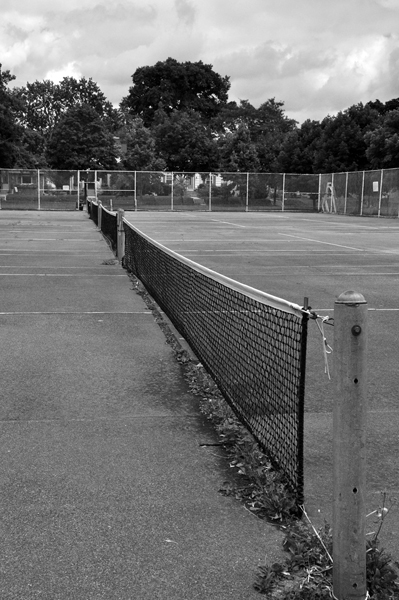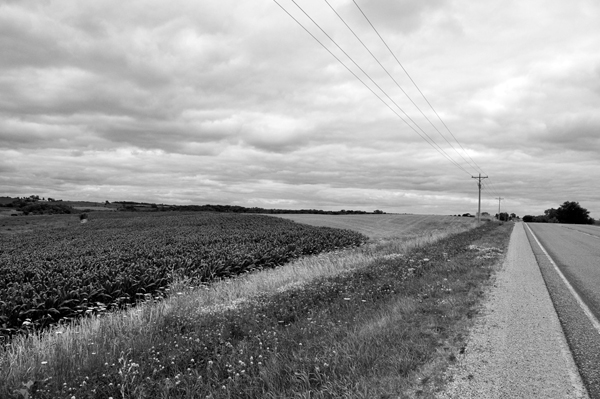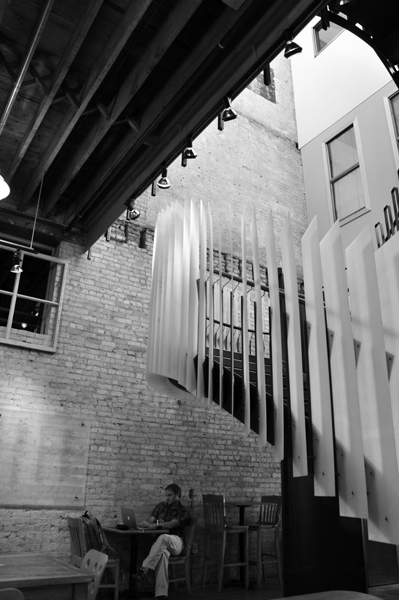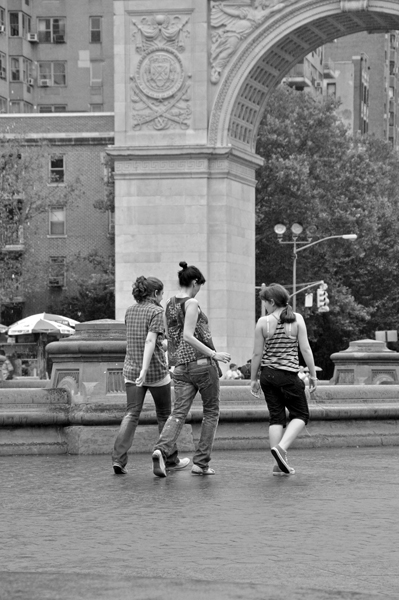One of the tools you can use as a photographer to create a meaningful composition is to use leading lines. Leading lines are used to draw the viewer’s eye through a photograph. They are intentional or unintentional, natural lines created in the space of the photograph and are used to create a visual narrative in the composition. Leading lines are also used to draw your eye to a focal point in the shot that you would like to highlight.
In the photograph of the tennis court, the top of the net leads your eye from the back of the shot to the front and creates a strong sense of depth. In the detail bridge shot, the multiple lines crossing each other create tension and also cut the space in a diagonal from one side to the other, repeatedly. As this demonstrates, leading lines can be used in multiples or alone, depending on the subject matter and what feeling you would like to convey.
In this shot of the Washington mountains, the guardrail along the road leads your eye from the foreground to the receding light of the mountain range in the background. It is also powerful because of the strong change in gradient from high contrast in the front to softness in the back.
Often, the most obvious and effective leading lines can be found and used in the roads and paths in a landscape shot. They are ideally designed to create perfectly straight or curved lines that can be set up in the composition to create a narrative and an intense composition. They can be used to lead the eye from one side of the shot to another or create motion and greater space within a flattened medium.
Also, be open to leading lines that may not be as obvious. Sometimes you may see them after the shot has already been taken. But, look closely when you are composing a photograph because they may not be in the form of a road or path. And, they may not be at a diagonal or incredibly large in the shot. In the beach photograph above, the receding shore line is not the most prevalent in the shot but it is composed to lead the eye to the lighthouse building in the background. The focus can still remain on the driftwood, but the leading line adds another element of depth. In the lower photograph, the vertical lines of the railing on the staircase lead the eye down to the man working on his laptop. The diagonal leading line of the partial ceiling draw the view from the top, to the middle, and then the bottom of the composition.
The most powerful effect leading lines can produce is the focus onto a main focal point. This can be a detail, object or part of a landscape, but often it is a person or people. Since they create a sense of movement, time and relationship to the space, leading lines are very effective in making their appearance seem more than coincidental.
In the photograph of the women in the park in New York City, their body language and relation to each other is called out as more prevalent with them being placed right under the distinctive arch. They are also not place directly under the center of the arch, which can make the composition seem obvious and posed. Because they are placed off-center and where the structure meets the earth, they become a unique part of the space.
The shore line of the lake is used to lead the eye up to the man painting and the beautiful, cloudy sky. This leading line is curved, adding to the motion of the water and roundness of the rocky shore.
This is a view of the same subject from the other side. Again, the shore of the lake is used to create a leading line to the man painting and create depth in the landscape.
When using leading lines, do not compose the shot so much that it seems obvious and intrusive. They should add to the positive tension of the shot. Leading lines may stand out as powerful but they should also be viewed as just one part of the composition you are creating. They may not always be possible as well depending on what you have to work with in your field of view. Still consider color, contrast, placement and other techniques. Leading lines are a great way to experiment with the space and create relationships between the frames of the shot and the subject matter and the space.













Pingback: A Line Up of 20 Interesting Line Photos